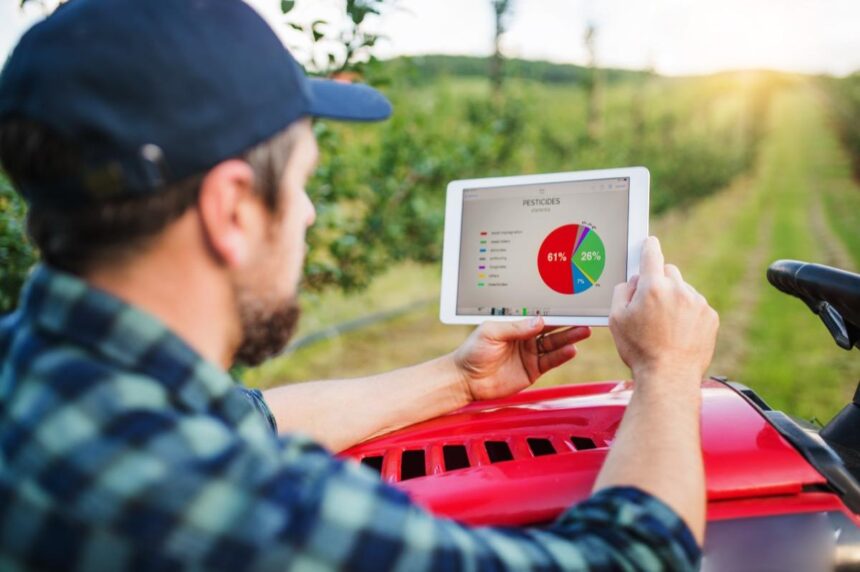Precision farming or agriculture is very simple and uses technology and data to optimize farming practices and maximize yields. Typically, precision farming techniques can be used to monitor and manage agricultural crops more efficiently, reducing waste and increasing yields. Sustainability and additional profits can be achieved with the help of key technologies in precision agriculture. Sensors, GPS, and satellite imagery are typically used to enhance crop management.

What is precision agriculture and how do we define it?
Precision agriculture uses data from various technologies such as sensors, GPS, and satellite imagery to manage agricultural activities. This is done by analyzing soil conditions, weather patterns, and crop health. Farmers can use this data and information to make more informed decisions to improve crop management and profitability. Based on data from sensors, farmers more accurately apply resources such as precise amounts of pesticides, water, and fertilizers to areas where they are needed. These types of data can help you achieve sustainability and efficiency and improve overall farm productivity.
What are the main components of precision agriculture and how do they work?
Collection of data using technical methods
The first step is to collect data from a variety of technological sources, especially with the help of field-based sensors, drones and satellites. Generally, these techniques are used to monitor soil moisture, temperature, and nutrient levels. Farmers also use images collected from drones and satellites to monitor crop health and growth stages. This data can be analyzed to take precise actions to improve crop yields and profits while becoming more sustainable.
Use collected data to make timely decisions
Once data is collected from various resources, AI and machine learning can be used to derive useful information. Once the data is fully analyzed, this technology software can identify data patterns and provide actionable recommendations. Let’s take a look at this example. The data will tell you the best time to irrigate your fields and the area you need to irrigate. You can also find damage to crops in specific areas that require pesticide spraying.
In case you missed it: Sustainable agriculture with CRF (controlled release fertilizer): A game-changer for crop productivity

How to implement and automate actionable recommendations
Once a decision has been made based on the data collected, the next step is to implement it in the field. Tractors and harvesters with GPS and automatic controls can be used for deployment. This modern equipment allows farmers to perform tasks such as planting and irrigation with great precision and accuracy. This not only makes effective use of resources on site, but also reduces waste. Introducing automation will save you time and effort, resulting in more profits.
What are the key technologies for precision agriculture?
Why remote sensing is important
Technologies such as satellite and drone imagery are used by farmers to monitor crops in their fields from above. Farmers can analyze these photos to determine soil conditions, crop health in the field, and pests and diseases. This allows farmers to detect crop problems early and make advanced decisions. This remote sensing technology will definitely help farmers improve crop yields and profits.
Global Positioning System and Global Positioning Satellite System
Global Positioning System (GPS) and Global Navigation Satellite System (GNSS) are important and important technologies for precision agriculture. These high-tech methods help farmers work in the field and with farm equipment by ensuring resources are applied exactly when and where they are needed.
In case you missed it: Modi’s vision for Indian agriculture

How does IoT for precision agriculture work?
The Internet of Things (IoT) allows farmers to monitor crops in their fields in real time. Take soil sensors as an example. These can tell you the moisture level in the soil. Weather stations track temperatures and rainfall and can be accessed remotely to provide up-to-date information so farmers can make informed decisions.
How can AI and machine learning help precision agriculture?
Artificial intelligence (AI) and machine learning (ML) use large datasets of field crops. After analyzing the data, farmers can predict weather patterns and crop yields. This also helps farmers determine the best times to plant, prune, and harvest. This data obtained from AI and ML can also be used to make crop irrigation and fertilization decisions.
In case you missed it: Organic farming and natural farming (ZBNF): key principles and differences

How Beneficial Is Precision Agriculture?
In short, it is understood that data based data obtained from various technologies in precision agriculture can help farmers make timely decisions, thereby increasing crop yields. can. It also helps farmers reduce the cost of water, fertilizer and pesticide inputs. This increases yields and profits, minimizes damage to the environment and achieves sustainability. These techniques in precision agriculture not only protect soil but also help improve water body management.
Farmers’ challenges when introducing precision agriculture
We have seen above how beneficial precision farming can be. However, there are some challenges during implementation. Achieving the above technology requires significant investment, and you must be able to afford the initial equipment costs. This is not possible for small farmers. Apart from this, farmers need to be able to learn how to operate these advanced tools. Therefore, farmers need to be trained and ready to gain technical expertise.
How is precision agriculture being adopted around the world?
Large farms in the United States have successfully adopted precision agriculture. Other developed countries have also successfully implemented this system, especially those with advanced agricultural practices. After implementing these technologies into precision agriculture, farmers have achieved dramatic increases in crop yields and profits. However, countries with smallholder farmers continue to face challenges in implementing precision agriculture technologies.
What can we expect from precision agriculture in the future?
Many advances in AI, robotics, and IoT technologies have the potential to revolutionize agricultural practices. These techniques may become affordable for small and medium-sized farmers. Many small countries that rely on agriculture will benefit from implementing precision agriculture technologies by making agriculture more sustainable and profitable.
In case you missed it: Artificial Intelligence in Agriculture – Role, Benefits and Examples

conclusion
For the future sustainability of agriculture, upcoming technologies will make precision farming more profitable by changing the way farming is done. Collecting data from different stages of crop growth using various technologies is of great importance, helping farmers make better agricultural decisions by reducing waste and improving crop yields. Helps you make decisions. These modern agricultural practices can play an important role in global food production. In the next few years, agriculture will become 100% digital.




